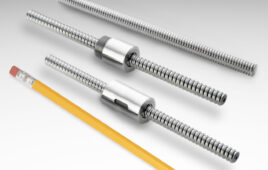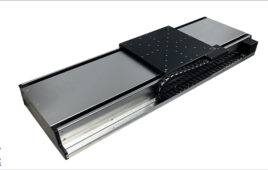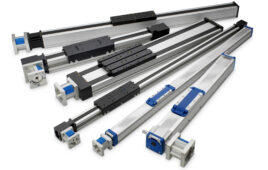Determining the life of a linear system that uses balls or rollers is relatively straightforward, thanks to the L10 bearing life equation, which gives life in meters of travel (for linear bearings) or revolutions (for screws). And for plain bearings and lead screws, manufacturers typically use the bearing’s PV value and operating conditions to provide an expected life in operating hours.
But machine builders and end users often want to know how long a system will last in terms of months or years, rather than meters or revolutions. In other words, they want to know how quickly the machine or application will “use up” the meters, revolutions, or hours of life that have been calculated. To make this conversion from the calculated bearing life to useful service life, we need to know the machine’s duty cycle — or how far and how often the system will travel.

Image credit: Hydratight Limited
In some applications, what seems to be a very long service life in terms of meters or hours of travel can turn out to be just a few months of usage once the duty cycle is taken into account. Translating life from meters or hours to months or years can help machine builders determine if they need a larger bearing with higher load capacity (which will, in turn, provide longer life) or even if they should consider a different type of bearing altogether.
Unlike rotary bearings, which can travel in one direction indefinitely, linear motion applications involve back-and-forth movements. The simplest applications travel an equal distance forward and back to home in one cycle. But many applications require intermediate moves, meaning the travel for one cycle is actually longer than that of a single, full move out and full move back.
For this example, we’ll use a 20×20 ball screw in an application that requires a forward move of 800 mm, then a partial move back of 200 mm, then forward again 200 mm, then back 800 mm to the home position.
Assume we’ve already calculated the L10 life of the screw assembly, and it comes out to 74,000,000 revolutions. Since our application is defined in terms of linear travel, we’ll convert the life in revolutions to life in meters by multiplying the calculated life (revolutions) by the lead of the screw (distance traveled per screw revolution).
![]()
![]()
Next, we need to determine the total travel required for one machine cycle, from the start of the cycle back to the home position.
![]()
![]()
Now we express the life of the screw in terms of machine cycles by dividing the travel life of the screw (in meters) by the travel (in meters) per machine cycle.
![]()
![]()
![]()
Now we need to know how long it will take — in years — for the machine to complete, or “use up,” this 740,000 cycles of life.
Let’s assume the machine takes 1.5 minutes to complete one full cycle, considering both the time to move and any dwell time between cycles. One cycle every 1.5 minutes means 40 cycles per hour (60 min/hr ÷ 1.5 min/cycle = 40 cycles/hr).
Let’s also assume the machine runs continuously for two shifts, or 16 hours, per day. (There will likely be some downtime within that 16 hours due to machine changeovers or maintenance, so using 16 hours is a conservative estimate.) So in one day, the machine runs 640 cycles (40 cycles/hr * 16 hrs/day = 640 cycles/day).
Now let’s assume the machine runs five days per week, 50 weeks per year, so 250 days per year. Now we can calculate both the number of cycles and the distance traveled in one year.
![]()
![]()
![]()
![]()
![]()
Since we’ve calculated the L10 life in both cycles per year and meters per year, we can use either of these values to determine how many years the ball screw can be expected to last. Or use both values for a good way to double-check our calculations.
In terms of cycles:![]()
![]()
In terms of travel:
![]()
![]()
Based on the machine’s duty cycle and the ball screw’s calculated life of 740,000 machine cycles (1,480,000 meters of travel) the screw should last for approximately 4.6 years.
Keep in mind that the L10 bearing life equation provides a theoretical life expectancy based on statistical analysis and real-world testing, and it assumes “conventional operating conditions” with proper lubrication and maintenance and no shock or vibration loads.
Filed Under: Linear Motion Tips




